
Theodore Roosevelt National Park is an American national park of the badlands in western North Dakota comprising three geographically separated areas. Honoring U.S. President Theodore Roosevelt, it is the only American national park named directly after a single person.

Douglas Rainsford Tompkins was an American businessman, conservationist, outdoorsman, philanthropist, filmmaker, and agriculturalist. He founded the North Face Inc, co-founded Esprit and various environmental groups, including the Foundation for Deep Ecology and Tompkins Conservation.

Pumalín Douglas Tompkins National Park is a 400,000-hectare (1,000,000-acre) national park in the Palena Province of Chile, created by Tompkins Conservation, which was endowed and led by the American business magnate Doug Tompkins and his wife, former CEO of Patagonia, Inc., Kris Tompkins. Designated a Nature Sanctuary in 2005, Parque Pumalín was Chile's largest private nature reserve and operated as a public-access park, with an extensive infrastructure of trails, campgrounds, and visitor centers. By an accord announced on 18 March 2017, the park was gifted to the Chilean state and became a national park.
Junction Sheep Range Provincial Park is a provincial park in British Columbia, Canada, located near the confluence of the Chilcotin and Fraser Rivers on the west bank of the latter river.
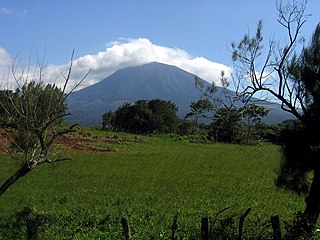
Guanacaste Conservation Area is an administrative area which is managed by the Sistema Nacional de Areas de Conservacion (SINAC) of Costa Rica for conservation in the northwestern part of Costa Rica. It contains three national parks, as well as wildlife refuges and other nature reserves. The area contains the Area de Conservación Guanacaste World Heritage Site, which comprises four areas.

An estancia is a large, private plot of land used for farming or raising cattle or sheep. Estancias in the southern South American grasslands, the pampas, have historically been estates used to raise livestock, such as cattle or sheep. In Puerto Rico, an estancia was a farm growing frutos menores; that is, crops for local sale and consumption, the equivalent of a truck farm in the United States. In Argentina, they are large rural complexes with similarities to what in the United States is called a ranch.

Cerro Castillo National Park is a nature reserve of Chile located in the Aysén del General Carlos Ibáñez del Campo Region, south of Coyhaique. The park is named after Cerro Castillo, its highest mountain and main attraction. The Carretera Austral passes through the park.
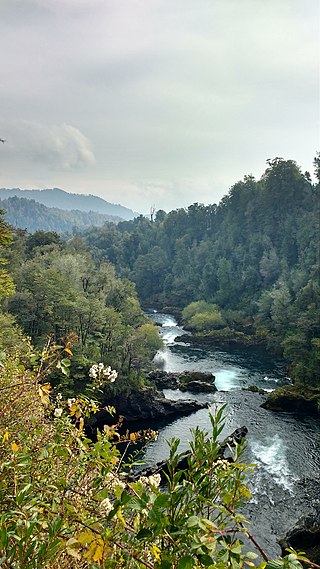
Huilo-Huilo Biological Reserve is a private for profit natural reserve and ecotourism area in southern Chile. It is by the community of Neltume along the international road to Hua Hum Pass near the border to Argentina. The reserve has unique hotels, including Montana Mágica, the Nothofagus hotel, cabins, and a lodge for backpackers. The grounds also include a brewery, various animal habitats, a funicular, and many miles of trails. The reserve includes many waterfalls and the eastern slopes of Mocho-Choshuenco, a glacial compound stratovolcano.
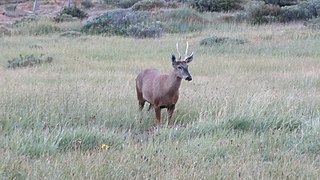
The south Andean deer, also known as the southern guemal, south Andean huemul, southern huemul, or Chilean huemul or güemul, is an endangered species of deer native to the mountains of Argentina and Chile. Along with the northern guemal or taruca, it is one of the two mid-sized deer in the Hippocamelus genus and ranges across the high mountainsides and cold valleys of the Andes. The distribution and habitat, behaviour, and diet of the deer have all been the subject of study. The viability of the small remaining population is an outstanding concern to researchers.

Futaleufú is a Chilean town and commune located in Northern Patagonia. Located at the confluence of the Espolon and Futaleufú river valleys, the town is approximately 10 kilometers from the Argentinian border. Futaleufú is the provincial capital of Palena Province, Los Lagos Region. Futaleufú, known locally as “Futa,” is a frontier town with a growing tourism industry based on adventure tourism—most specifically whitewater rafting—but also fishing, mountain biking, trekking, and canyoning. Due to its proximity to the Argentinian border, Futaleufú is most easily accessed from airports in Esquel and Bariloche, Argentina. Other tourists access the town through the Northern Patagonia Airport in Chaiten, or vía a system of ferries that leave from the closest major Chilean city, Puerto Montt.
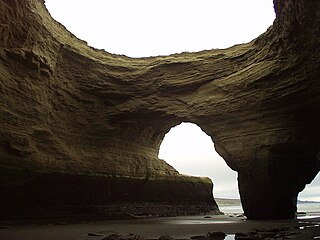
Monte León National Park is a federal protected area in Santa Cruz Province, Argentina. Established on 20 October 2004, it houses a representative sample of the steppe and Patagonian coast biodiversity in good state of conservation, as well as several paleontological sites of high value. It runs along 36 km (22 mi) of the southern Argentine Sea coastline.

Kristine McDivitt Tompkins is the president and co-founder of Tompkins Conservation, an American conservationist, former CEO of Patagonia, Inc., a UN Patron of Protected Areas from 2018-2022. She has committed her career to protecting and restoring Chile and Argentina’s wild beauty and biodiversity by creating national parks, restoring the wildlife, inspiring activism, and fostering economic vitality as a result of conservation. Having protected over 14 million acres of parklands in Chile and Argentina through Tompkins Conservation and its partners, Kristine and Douglas Tompkins, her late husband who died in 2015, are considered some of the most successful national park-oriented philanthropists in history.

Nahuel Huapi National Park is the oldest national park in Argentina, established in 1922 as Parque Nacional de Sud and reconfiguered in 1934. It surrounds Nahuel Huapi Lake in the foothills of the Patagonian Andes. The largest of the national parks in the region, it has an area of 7,050 km2 (2,720 sq mi), or nearly 2 million acres. Its landscapes represent the north Patagonian Andean Zone consisting of three types, namely, the Altoandino, the Andino-Patagónico and the Patagonian steppe. It also represents small parts of the Valdivian Rainforest.

American Prairie is a prairie-based nature reserve in Central Montana, United States, on a mixed grass prairie ecosystem with migration corridors and native wildlife. This wildlife conservation area is being developed as a private project of the American Prairie Foundation (APF). This independent non-profit organization aims to include over 3 million acres (12,000 km2) through a combination of both private and public lands.

The Chacabuco River is a river of Chile located in the Aysén del General Carlos Ibáñez del Campo Region. The river rises in a col between Cerro Lucas Bridges and Cerro Baker. The latter is a mountain on the Argentina-Chile border, close to Roballos Pass.
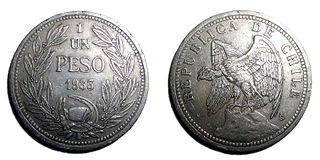
In late 19th and early 20th centuries, sheep farming expanded across the Patagonian grasslands making the southern regions of Argentina and Chile one of the world's foremost sheep farming areas. The sheep farming boom attracted thousands of immigrants from Chiloé and Europe to southern Patagonia. Early sheep farming in Patagonia was oriented towards wool production but changed over time with the development of industrial refrigerators towards meat export. Besides altering the demographic and economic outlook of Southern Patagonia the sheep farming boom also changed the steppe ecosystem.
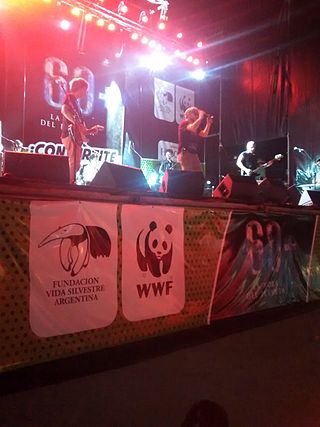
Fundación Vida Silvestre Argentina is a civil association founded on June 29, 1977, working to address the main environmental issues in Argentina. Its mission is to propose and implement solutions for nature conservation, promote the sustainable use of natural resources, and encourage responsible behavior in the context of climate change. The foundation achieves its goals through various actions, including the protection of natural areas, advocating for environmental legislation, promoting awareness and education, and encouraging responsible consumption and production.

Horseshoe Park is a flat at 8,524 feet (2,598 m) in elevation in Larimer County, Colorado. It is within the Rocky Mountain National Park, which lies between Estes Park to the east and Grand Lake, Colorado on the west. Horseshoe Park is home to bighorn sheep, elk and other wildlife, and it is a wetland sanctuary for a wide variety of birds. Recreational activities include picnicking, hiking, cross-country skiing and snowshoeing. Roaring River, Lawn Lake and Crystal Lake are located here.

Patagonia National Park is a National Park in the Aysén Region of Chile. Once a private nature reserve operated as a public-access park, it was donated to the government of Chile by Tompkins Conservation in 2018.

Iberá National Park is a national park in Argentina located in the northeast province of Corrientes. The national park adjoins the 5,530 km² Iberá Provincial Park to the southeast. The national park and provincial park are both within the Iberá Provincial Nature Reserve, a conservation area of 13,245 km² created in 1982. The combined protected area is the largest in Argentina.




















